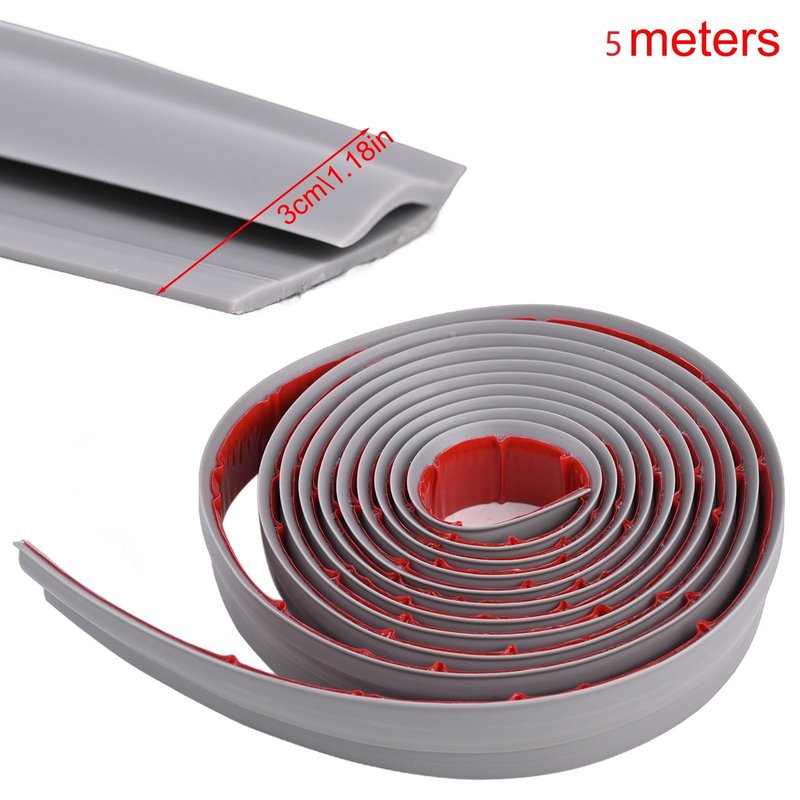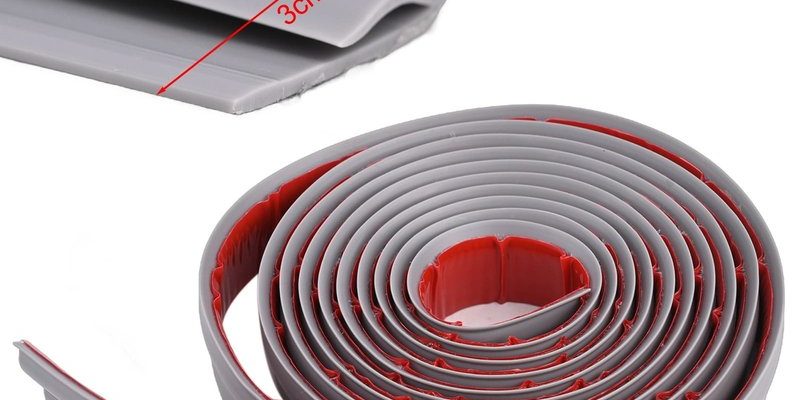
Here’s the thing: not all adhesives are built for the mess and moisture that thresholds face. Some might seem fine for a few weeks, but a good rainstorm will show you where they fall short. The best adhesives for sealing gaps around thresholds are waterproof, flexible, and can handle a bit of foot traffic. Brands like GE, Gorilla, and Loctite keep coming up in conversations among DIYers because they’ve earned their stripes for reliability. But how do you choose the right one for your particular mess? Let’s take a deeper look.
What Makes a Good Threshold Adhesive?
Choosing an adhesive for door thresholds isn’t just about grabbing the first tub of glue you see at the hardware store. You want a product that’s waterproof, long-lasting, and flexible. Why? Because thresholds are in a constant battle with moisture, temperature swings, and people (and pets) walking over them day in and day out.
Waterproofing is the main requirement. Even if your entry is covered, a sideways rain or a puddle near the door can send water creeping right into any unsealed gap. If the adhesive isn’t waterproof, it will peel off, crack, or let water find its way in.
But flexibility is important too. Doors and floors move with changes in weather—expanding a bit in summer and shrinking in winter. A rigid adhesive might look fine at first but will split or break away after a few months of these temperature cycles.
Durability is the last key point to consider. High-traffic thresholds take a lot of abuse. Kids, groceries, even pets will all test that seal. An adhesive that’s not rated for outdoor or heavy-duty use will wear out quickly, leaving you back at square one sooner than you’d like.
Types of Waterproof Adhesives for Threshold Gaps
Honestly, walking down the adhesive aisle can feel overwhelming—there are so many tubes, tubs, and cartridges claiming to do it all. But when it comes to sealing gaps around thresholds, your main options are:
- Silicone Caulk: Perfect for small- to medium-sized gaps and easy to apply with a caulk gun. Pure silicone stays flexible, resists mold, and holds up to moisture. GE Advanced Silicone is a popular choice here.
- Polyurethane Sealant: Tougher and more durable than silicone, it’s great for larger gaps or areas with lots of movement. Loctite PL S40 is a trusted option, used by pros for sealing all sorts of exterior gaps.
- MS Polymer Adhesives: Sometimes called “hybrid” sealants, these combine the best properties of silicone and polyurethane. Sikaflex and Gorilla Construction Adhesive both make versions that work well for thresholds, especially if you need strong adhesion.
- Expanding Foam: For very large, irregular gaps, some people use minimal expanding foam. This isn’t a true adhesive, but it fills space and can be trimmed and coated with a waterproof sealant.
Here’s my take: For most homes, silicone or polyurethane adhesives cover 90% of threshold sealing needs. The others work in specific cases, but can sometimes be messier or overkill.
Step-by-Step: How to Seal Threshold Gaps With Waterproof Adhesive
If you’re new to using caulk or sealant, don’t worry—this is one of those simple home fixes that feels intimidating until you actually do it. Here’s how to seal that pesky gap and keep water where it belongs:
- Clean the area. Sweep out any dirt, dust, or old adhesive from the gap around your threshold. A vacuum or stiff brush helps. The cleaner the surface, the better the adhesive will stick.
- Dry thoroughly. Moisture is the enemy. Wait for a dry day, and wipe away any moisture so the adhesive will bond properly.
- Apply painter’s tape. If you want a super neat finish, run tape along both sides of the gap to keep the adhesive line straight.
- Cut and prep the adhesive tube. Use a utility knife to snip the tip off your silicone, polyurethane, or hybrid tube at a 45-degree angle. Pop it in your caulk gun.
- Apply the adhesive. Squeeze a steady bead into the gap. Don’t worry if it’s not perfect—your finger or a caulk-smoothing tool can tidy it up.
- Smooth and finish. Lightly press the adhesive into the gap and along the edge for a watertight seal. Remove tape before the sealant skins over.
- Let it cure. Most waterproof adhesives need 24 hours to fully cure. Avoid heavy traffic until it’s set.
You might be tempted to rush through, but spending an extra few minutes getting it right will save you way more time (and headache) in repairs later.
Popular Waterproof Adhesive Brands for Thresholds
With so many options out there, it helps to know which brands have a solid reputation for threshold sealing. Here are a few you’ll hear about again and again:
- GE Advanced Silicone: This is a go-to for many DIYers because it’s easy to apply, doesn’t shrink, and truly stands up to water. It stays flexible, which is key for threshold movement.
- Gorilla Waterproof Caulk & Seal: Built for indoor/outdoor jobs, Gorilla’s sealants are tough, paintable, and stick to almost any surface—including wood, metal, and concrete.
- Loctite PL S40 Polyurethane: If you want something industrial-strength, Loctite is hard to beat. It’s a bit messier than silicone, but it’s also more durable for outdoor use and bigger gaps.
- Sikaflex Construction Sealant: This hybrid adhesive is strong, flexible, and popular with contractors for tricky, high-movement areas. It also comes in several color options, which is a nice touch if you care about appearance.
It’s worth noting that not all caulks are created equal. Some cheap “all-purpose” caulks break down quickly with outdoor use and exposure. Stick with a well-reviewed waterproof brand and you’ll save yourself a lot of rework.
Silicone vs Polyurethane: Which Works Better For Thresholds?
Let me explain why this debate comes up so often. Both silicone and polyurethane adhesives have their strengths—but it really comes down to the needs of your threshold.
Silicone is super flexible and sticks well to smooth surfaces like metal, tile, and finished wood. It’s also 100% waterproof and resists mold and mildew. If your threshold is mostly protected, or if you’re sealing a neat, fairly uniform gap, silicone is usually the easiest and cleanest choice.
Polyurethane, on the other hand, is much tougher. It bonds to rough or porous surfaces like concrete, brick, or untreated wood, and can handle wider or uneven gaps without pulling away. It also holds up against heavy use and more dramatic temperature swings. The trade-off? Polyurethane is harder to apply, tends to be messier, and takes longer to fully cure.
If you’re sealing a high-traffic exterior door that gets hit with weather, a polyurethane like Loctite PL S40 is probably best. For smaller, interior or lightly-used thresholds, GE Silicone or Gorilla Caulk is likely more than enough.
Common Threshold Sealing Mistakes (And How to Avoid Them)
Honestly, most failed threshold seals come down to a few rookie mistakes. Here are some things to watch out for:
- Skipping Surface Prep: If you apply adhesive to a dirty or damp surface, you may as well skip the job altogether. The bond won’t last, and water will find its way right back in.
- Not Filling the Whole Gap: It’s tempting to just cover the top of a gap with a thin line, but water will snake its way through any opening. Make sure you fill the entire depth of the space for a real seal.
- Using the Wrong Adhesive: Interior-only caulks, latex, or stuff labeled “quick-dry” can crack or peel outdoors. Go for a product labeled waterproof and exterior rated.
- Not Letting It Cure: Walking on a fresh bead of adhesive before it’s set will mash it out of place and weaken the seal. Wait the full cure time—your patience pays off.
If you catch yourself thinking, “That’s good enough,” it’s probably worth spending another couple of minutes for a lasting fix.
When to Consider Professional Help
You might be wondering, is it ever worth calling in a pro? The answer depends on the size and type of the gap—and your comfort level with a caulk gun. If the gap is wider than half an inch, runs deep under the threshold, or if water damage is already visible, a professional can make sure there’s no underlying issue (like rot or structural shifting) before sealing it up.
Pros also have access to commercial-grade adhesives and techniques, like backer rods for super-wide gaps, or color-matched sealants that blend right in. Plus, if the threshold is part of a larger door repair or needs to be reset or replaced, this is a good time to handle everything at once.
For most small, straightforward gaps, though, a little DIY spirit and the right waterproof adhesive gets the job done for way less.
Maintaining Your Sealed Threshold
Sealing the gap is only half the battle—it’s also important to keep an eye on your work over time. Thresholds are exposed to a lot, and even the best adhesives eventually wear down. Here’s how to make that seal last as long as possible:
- Do a seasonal check. Once or twice a year, look for cracks, peeling, or signs of water getting through. A quick touch-up with the right adhesive can prevent bigger headaches.
- Keep it clean. Sweep away debris and gunk that can loosen or hide damage to the seal.
- Watch for shifting. If the threshold moves or the gap gets bigger (maybe from settling or heavy use), you may need to remove the old adhesive and reapply.
- Use matching adhesives for touch-ups. Sticking with the same brand and type helps avoid compatibility issues and keeps the seal looking neat.
Honestly, this little bit of maintenance is a lot cheaper and easier than fighting constant water leaks or dealing with warped flooring later on.
Wrapping Up: Picking the Best Waterproof Adhesive for Threshold Gaps
Sealing gaps around thresholds might seem like a tiny detail, but it’s one of those home fixes that pays off big time. The right waterproof adhesive acts like a shield, keeping your interior dry, draft-free, and bugless no matter what the weather throws at you.
Whether you pick GE’s reliable silicone, the muscle of Loctite polyurethane, or experiment with a hybrid adhesive like Gorilla or Sikaflex, taking the time to prep, fill, and cure your seal makes all the difference. Stick with products rated for outdoor, waterproof use—and don’t be afraid to check your work every so often. Little gaps today turn into big repairs tomorrow if you ignore them.
When in doubt, reach for a product that’s stood the test of time and traffic. With a steady hand and a bit of patience, you can tackle threshold leaks and drafts for good—and enjoy a cozier, cleaner entryway in the long run.
